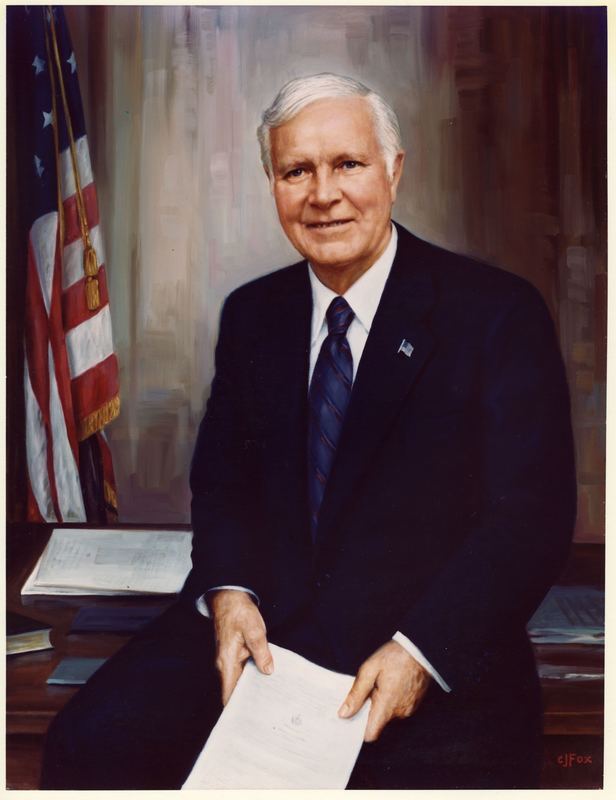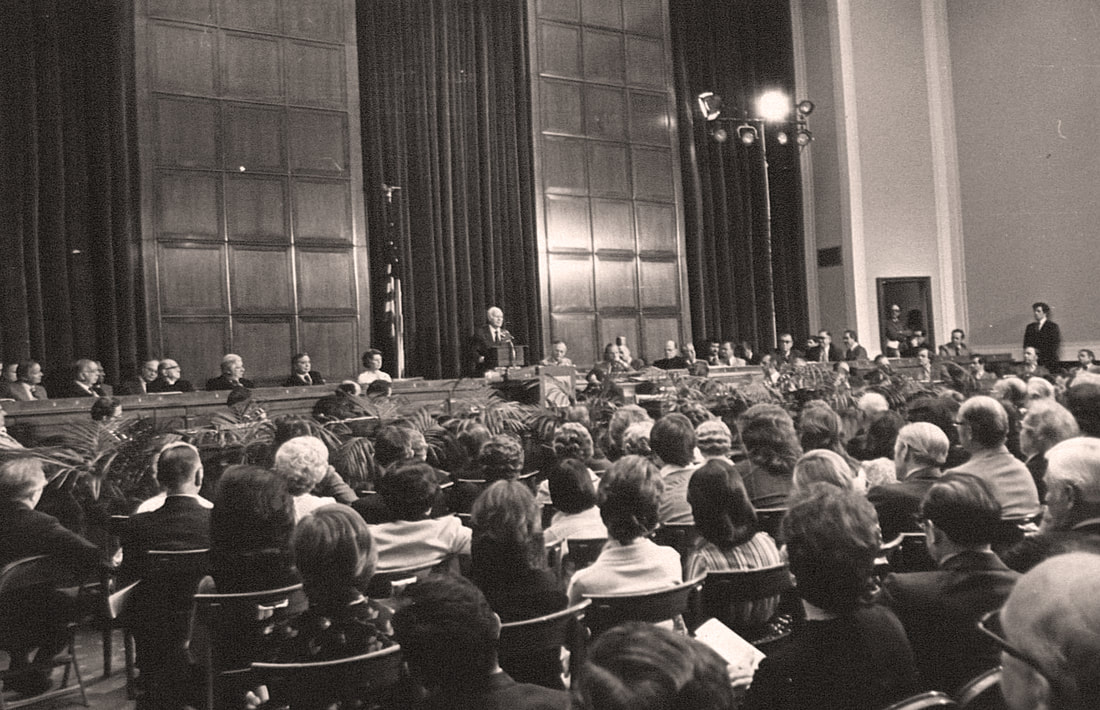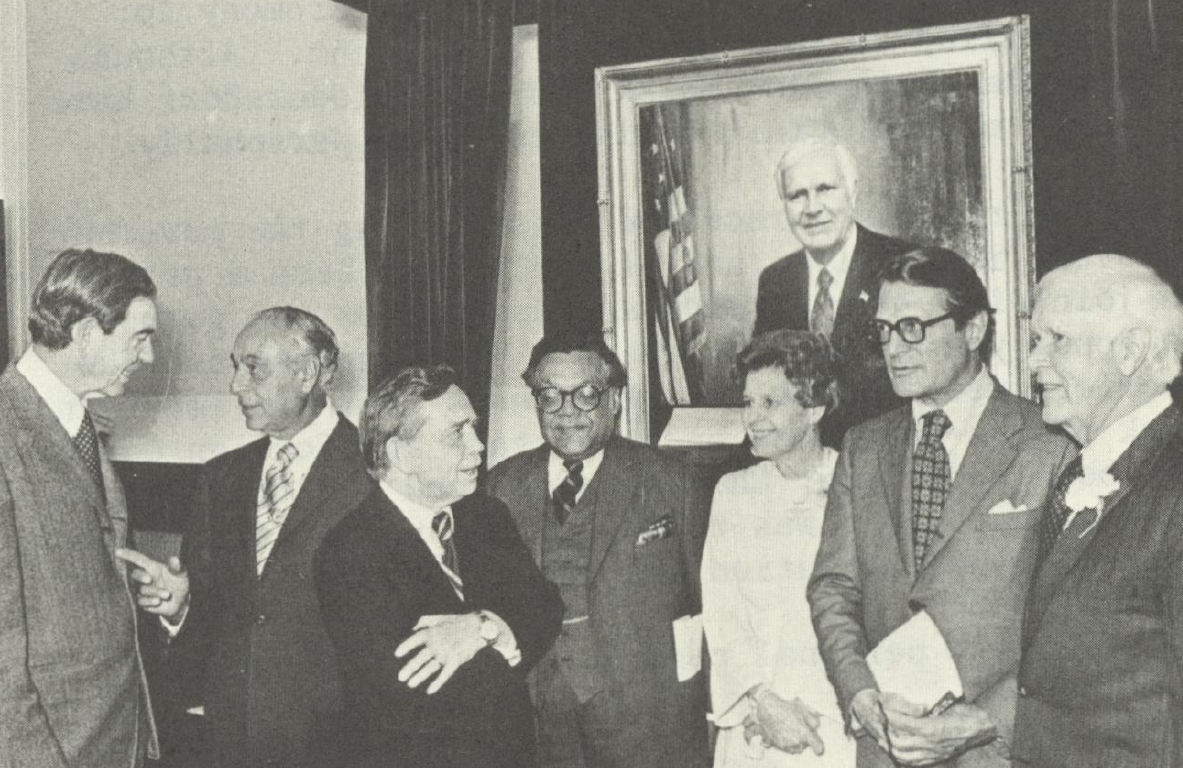However, two years after Congressman Staggers' portrait unveiling ceremony, a revelation about the artist Charles J. Fox came to light. While contesting $40,000.00 in back taxes owed in connection with his portrait business, Fox confessed that he was not the artist responsible for the hundreds of portraits which bore his signature. Fox was in actuality an entrepreneur and art dealer named Leo Fox.
The real artist behind the portraits commissioned under Fox's business was Irving Reskinoff, a Russian-born painter who had studied at the St. Petersburg Imperial Art Academy before fleeing the 1917 Revolution. He settled in New York with aspirations of become an abstract artist. Unable to achieve success as an independent painter, Reskinoff became a contract artist for Fox's studio and began painting portraits of prominent American citizens and government officials. For each commission, Reskinoff worked from a single profile of the subject, relying on other photographs or published images to complete the portraits. This arrangement lasted for over 40 years, during which Reskinoff received on average 5% commission on his portraits, with Fox taking the majority cut of the profits. Once the news of the scheme broke, Reskinoff finally received credit for his own portraits, ten of which are now preserved by the Historian’s Office in the House of Representatives. Congressman Staggers’ portrait, attributed to C.J. Fox, but in reality painted by Irving Reskinoff, remains preserved today in the House of Representatives, the controversy over its artist an interesting, but little-known anecdote. You can learn more about Charles J. Fox, Irving Reskinoff, and their paintings in the halls of Congress on the House of Representatives’ History, Art, and Archives site here >> Comments are closed.
|
Welcome to the Byrd Center Blog! We share content here including research from our archival collections, articles from our director, and information on upcoming events.
Categories
All
Archives
July 2023
|
Our Mission: |
The Byrd Center advances representative democracy by promoting a better understanding of the United States Congress and the Constitution through programs and research that engage citizens.
|
Copyright © Robert C. Byrd Center for Congressional History and Education
|




 RSS Feed
RSS Feed
